The Rise of Riser Drop Bars
We’ve been hitting handlebars hard lately at Slowtwitch, with significant developments still happening in 2019. While much of our recent coverage has been related to aerobars, we’ve also touched on drop bars – and will continue that today.
The essence of the road drop handlebar has remained relatively unchanged over time. They have a top section, a brake hood section, and a drop section. Sure, bar diameters have changed, as have hood and drop shapes. Perhaps the biggest development in recent years has been the spread of shorter reach and drop measurements – often called “short and shallow” drop bars. These typically feature a reach measurement of around 70-75mm, along with a drop measurement of 120-130mm. Profile-Design has also been innovative here, creating their own “DRV” (or “Drive”) measurement, which gives you a realistic drop figure for where you’ll actually rest your hands. I’m a short-shallow convert, and use them exclusively now.
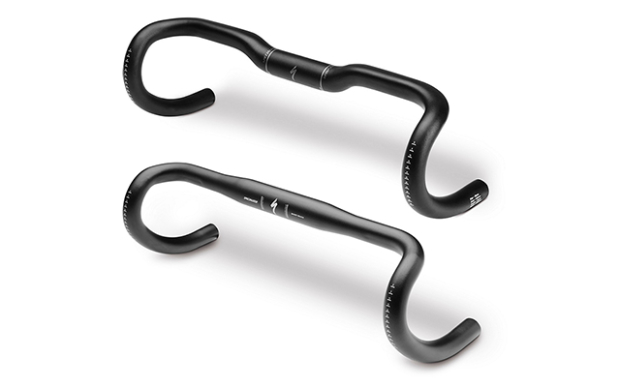
Today, however, we’re going to discuss an even newer trend in drop handlebars; an unsung hero for bike fit – especially tall riders. Oddly enough, its popularity has been boosted by gravel cyclists, but I’m here to argue that it’s equally as applicable to road cycling.
What am I talking about? The riser drop bar.
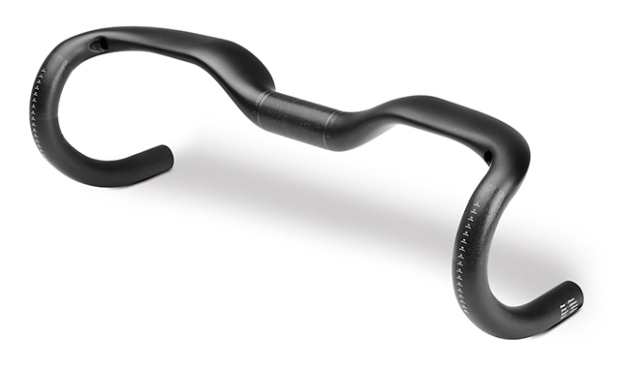
Riser bars are all over the mountain bike world, with all sorts of options. In short, they angle upwards just to the left and right of the stem clamp area, bringing the hand grip area higher. In other words, it’s effectively doing the same thing as a taller head tube, a higher rise stem, or adding headset spacers under your stem. The application to drop bars has been around for a handful of years now, pioneered by brands like Specialized.
While I was out at the Sea Otter trade show this Spring, I noticed a LOT of this bar style, almost exclusively on gravel bikes. I inquired with a few of the bike brands as to why they opted to spec a riser drop bar, and they all had the same answer: For gravel, many riders like a higher bar position than on a road bike, but they don’t like the look of too many spacers or an up-turned stem. This mostly amounts to a fashion problem, but it’s a problem nonetheless in the marketplace.
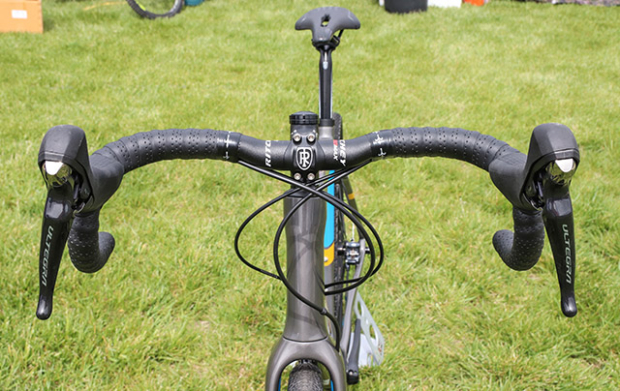
That’s all well and good, and I’m fine with spec’cing riser bars on gravel bikes. However, there is a much wider application of this product, which is a boon to fitters and long-legged cyclists.
Specifically, long-legged riders (like myself) have trouble fitting on a lot of stock road bikes. Our saddles are high, and unless you’re particularly flexible, that means we also need our bars to come up higher, too. I’m about 6’1”, and often fit on a size 58cm road bike, including the tall-ish head tube. The issue is that the top-half of my body is relatively short, so sometimes that 58 top tube is too long – requiring a short stem. In a perfect world, I need the head tube of the 58 combined with the top tube of a 56… which is why I’ve purchased more than one custom bike. I recently tested a Norco gravel bike in size 55.5cm, which had a perfect reach, but required a big stack of spacers and up-turned stem to get the bar height in a realistic place.
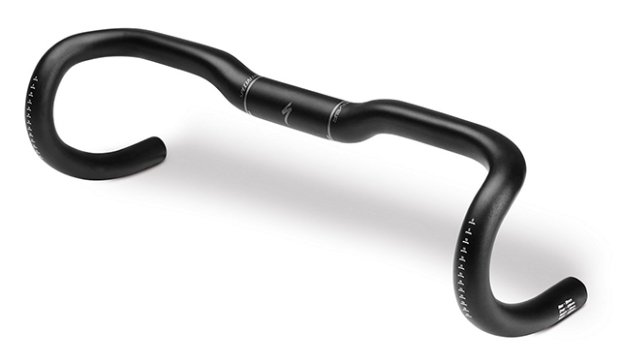
This is exactly why I’m the perfect customer for the riser drop bar, and why I just got my hands on a Hover Expert Alloy bar from Specialized for my road bike, which has 20mm of headset spacers. That’s not the end of the world, but I’d like the bars a bit higher. The Hover bar has 15mm of rise, which is a perfect amount. It has a nice short reach of 75mm combined with a shallow 123mm drop – also right on-point. It costs a very reasonable $55, which is significantly cheaper than buying a new fork or complete bike. Specialized also makes this bar in carbon for $275, or their S-Works Aerofly carbon bar with 25mm rise for $300. These bars open up a much wider range of bikes that I can comfortably ride.

While riser drop bars aren’t hugely popular, there are options out there from the likes of Ritchey, Control Tech, FSA, and more. Note that it appears that some of them use rise as more of an aesthetic feature – with the bar dropping back down towards the brake hoods (pictured above). These only provide rise for the top section of the bar, and not the brake hoods and bar drops.
You might ask, “How many options in rise do we really need? Is this just adding too many options in an already-crowded market?” My answers are that most brands probably only need one option of rise, in the neighborhood of 20mm. I don’t think that this is an unnecessary addition of options, unless of course the brand’s line is already crowded with too many redundant options. As I’ve said before, customers are becoming less concerned with exotic materials and whiz-bang tech stories for contact points like handlebars, pedals, and saddles. What good is a super-light bar that absorbs every nano-vibration if its dimensions don’t fit me? Over time, we’ll see more of the fat cut from product lines to fill in with what actually matters… or at least that’s my hope.
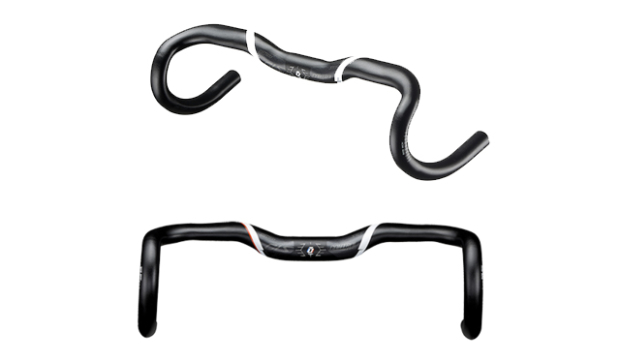
There is one legitimate problem that riser drop bars bring up, and that’s a reduction in compatibility with add-ons like aerobars. These normally clamp on the bar adjacent to the stem clamp, which can be made impossible if the rise starts there. Even if you can mount a clip-on aerobar, the rise of the bar top might interfere with the aerobar arm pads or other hardware. Buyer beware. If you need higher bars and you MUST ride with clip-ons, you’ll likely be relegated to extra spacers or a high-rise stem (or a bike with a tall head tube).

Finally, this might bring up a question in your mind: What about dropped-drop bars? Something with an effective negative rise? Don’t we need that for the super-aero crowd, or those who struggle to get their bars low? Perhaps. This is something we’ve seen a little bit in the mountain bike world, with the advent of huge 29” wheels on small size frames. 29er wheels and a suspension fork get to be quite tall, and often times a short head tube and slammed stem aren’t even close to getting the bar position right for the 5-foot-tall rider. Negative rise bars can help this, though I’d argue that the larger solution is to use a smaller wheel like we did back in the stone-age of the early 2000’s.
While there probably is a legitimate market for a dropped-drop bar, logic and observation tell me that this pie is much smaller than the riser-drop bar pie. Go to any local race or group ride of actual average people and you’ll find ten times as many people with huge spacer stacks than those with slammed stems (excluding hyper performance markets like Boulder, CO). I’m not trying to poo-poo you stem-slammers and shorter folks – just being realistic about what I see in the world of aging-but-enthusiastic athletes and the height of their bars. If we can get more awareness and more brands on the riser bandwagon, it’s more than possible to create more dropped-drop choices, too, if the demand exists.


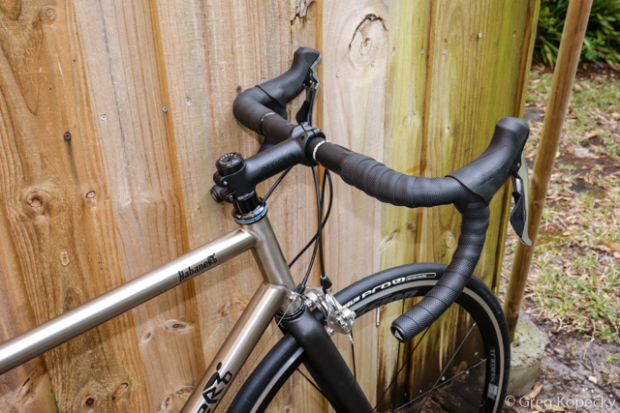
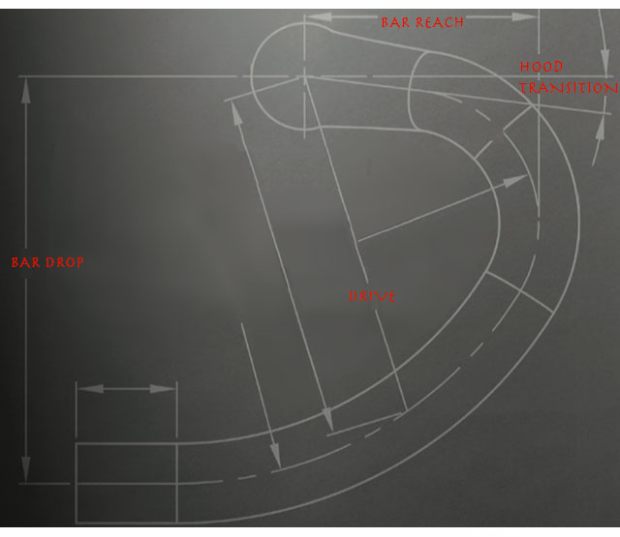
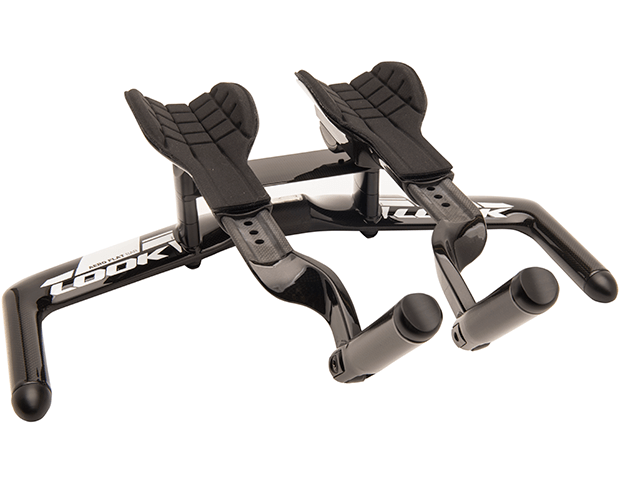
Start the discussion at slowtwitch.northend.network